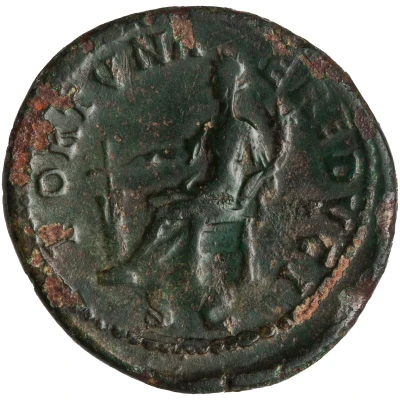


© American Numismatic Society (ANS)
Dupondius - Hadrian FORTVNAE REDVCI S C; Fortuna
| Orichalcum | 12.5 g | 27 mm |
| Issuer | Rome › Roman Empire (27 BC - 395 AD) |
|---|---|
| Emperor | Hadrian (Publius Aelius Hadrianus) (117-138) |
| Type | Standard circulation coin |
| Years | 121-123 |
| Value | 1 Dupondius = ⅛ Denarius |
| Currency | Denarius, Reform of Augustus (27 BC – AD 215) |
| Composition | Orichalcum |
| Weight | 12.5 g |
| Diameter | 27 mm |
| Shape | Round (irregular) |
| Technique | Hammered |
| Demonetized | Yes |
| Updated | 2024-10-06 |
| Numista | N#255170 |
|---|---|
| Rarity index | 97% |
Reverse
Fortuna, seated left, holding rudder and cornucopia.
Script: Latin
Lettering:
FORTVNAE REDVCI
S C
Translation:
Fortunae Reduci. Senatus Consultum.
To returning fortune. Decree of the senate.
Comment
Source: Online Coins of the Roman Empire (OCRE)Interesting fact
The Dupondius coin featuring Emperor Hadrian and the goddess Fortuna is an interesting artifact from ancient Rome. One fascinating fact about this coin is that it was made of a metal called Orichalcum, which was a prized alloy in ancient times. Orichalcum was believed to be a combination of gold, silver, and copper, and was known for its durability and resistance to corrosion. The use of this metal for the Dupondius coin speaks to the advanced metallurgical skills of the ancient Romans and the value they placed on creating high-quality currency.